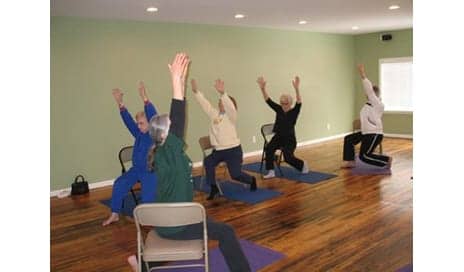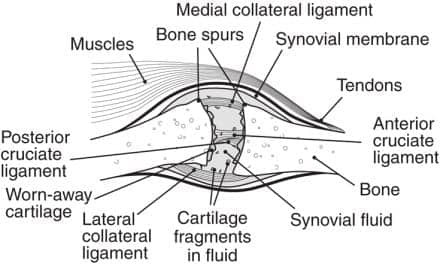
The overall goal of chair yoga is to decrease pain, and improve physical and psychosocial functions of elderly individuals with osteoarthritis who are unable to participate in other exercise and yoga programs. (Photo courtesy of Florida Atlantic University)
In reportedly the first study of its kind, researchers from Florida Atlantic University suggest that performing chair yoga could be an effective way for adults with osteoarthritis to reduce pain and improve quality of life while avoiding pharmacologic treatment or adverse events.
Chair yoga is performed while sitting in a chair or standing while holding a chair for support, and it can be well suited for older adults who cannot perform standing yoga or exercise, according to a media release from Florida Atlantic University.
In the study, published in the Journal of the American Geriatrics Society, the researchers randomly assigned 131 older adults with osteoarthritis to participate in either the “Sit ‘N’ Fit Chair Yoga” program developed by Kristine Lee or a health education program. Whatever their assignment, the participants attended 45-minute sessions twice a week for 8 weeks. During the sessions, the researchers measured the adults’ pain, pain interference (how it affects their life), balance, gait speed, fatigue and functional ability before, during, and after the sessions.
According to the results, the participants in the chair yoga program, compared to those in the health education program, demonstrated a greater reduction in pain and pain interference during their sessions, and that reduction in pain interference lasted for about 3 months after the 8-week chair yoga program was completed. The 8-week chair yoga program also was associated with reductions in fatigue and improvement in gait speed during the study session, but not post session, the release explains.
“With osteoarthritis-associated pain, there is interference in everyday living, limiting functional and social activities as well as diminishing life enjoyment,” says Juyoung Park, PhD, co-author and the study’s co-principal investigator.
“The effect of pain on everyday living is most directly captured by pain interference, and our findings demonstrate that chair yoga reduced pain interference in everyday activities,” adds Park, a Hartford Geriatric Social Work Faculty Scholar and an associate professor in FAU’s College for Design and Social Inquiry, in the release.
“Currently, the only treatment for osteoarthritis, which has no cure, includes lifestyle changes and pharmacologic treatments that are not without adverse events,” states Ruth McCaffrey, DNP, ARNP, co-author and emeritus professor in FAU’s College of Nursing.
“The long-term goal of this research is to address the non-pharmacologic management of lower extremity osteoarthritis pain and physical function in older adults, and our study provides evidence that chair yoga may be an effective approach for achieving this goal,” McCaffrey continues in the release.
The study’s co-principal investigator and co-author Patricia Liehr, PhD, RN, a professor in FAU’s College of Nursing, adds that “The potential impact of this study on public health is high, as this program provides an approach for keeping community-dwelling elders active even when they cannot participate in traditional exercise that challenges their balance.”
[Source(s): Florida Atlantic University, Science Daily]




